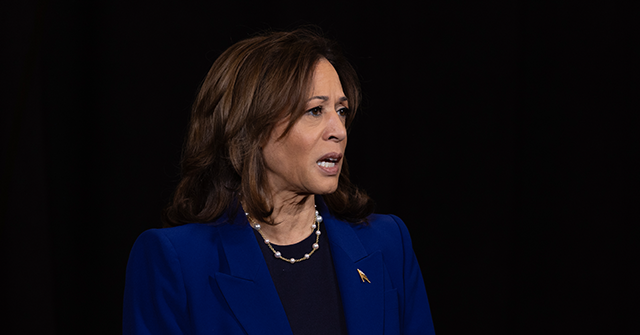In October, the economic landscape delivered a harsh reminder to Kamala Harris’s campaign, revealing the impact of the monthly jobs report, which contradicted their optimistic claims about economic recovery. Harris, following President Joe Biden’s precedent, laid the blame for pandemic-induced job losses on former President Donald Trump. Despite Biden winning the presidency on a platform criticizing Trump’s handling of the pandemic and its effects on the economy, the truth was more complex. The economy had begun recovering more robustly than anticipated prior to the administration’s attempts at introducing significant stimulus packages like the American Rescue Plan and the Build Back Better Act. However, the subsequent fallout from these policies has led to severe inflation, high interest rates, an unaffordable housing market, and an erosion of confidence in the economy, even amid periods of growth and low unemployment.
Critically assessing the Democrats’ narrative surrounding job losses during the pandemic unveils misconceptions that fuel their critiques. The arguments fail to acknowledge that the extended lockdowns and school closures largely advocated by the left contributed to the economic downturn. In contrast, the U.S. economy rebounded more efficiently than many other developed countries, partly due to actions taken under Trump’s administration. Harris’s team often sidestepped discussions about potential alternatives that could have mitigated pandemic impacts, choosing instead to focus criticism on Trump’s manufacturing record. Harris charged that his presidency saw significant losses in manufacturing jobs, a narrative that ignores the full context of job statistics during Trump’s term.
During a campaign rally in Michigan, Harris claimed that America lost nearly 200,000 manufacturing jobs under Trump, despite the fact that job numbers reveal a more nuanced reality. By January 2021, when Trump left office, there were only 178,000 fewer manufacturing jobs compared to when he began his presidency. Prior to the pandemic, the manufacturing sector had created over 430,000 jobs during Trump’s term and had regained 769,000 jobs by the end of his presidency. However, under Biden and Harris, the manufacturing sector only returned to pre-pandemic job levels by mid-2022, and job growth eventually stagnated. This contradiction raises questions about the Democrats’ narrative on economic recovery and job creation, particularly regarding the manufacturing sector’s performance under their governance.
Moreover, Harris’s assertions about job losses prior to the pandemic were challenged when data from CBS indicated a decline of 48,000 manufacturing jobs from the beginning of 2019 to early 2020. Ironically, this figure mirrors the job losses reported in the most recent October jobs report, where the economy shed 46,000 manufacturing jobs, summing up to a three-month loss totaling 78,000 jobs. A disconcerting trend emerges with the manufacturing sector having lost jobs in seven out of the last twelve months, prompting a reconsideration of the narrative around the economy’s purported stability and growth under the current administration.
The Harris campaign responded to the dismal October job numbers by attributing the losses to external factors such as hurricanes and a strike at Boeing. While external circumstances do indeed affect job statistics, the administration that previously blamed Trump for the pandemic’s economic consequences finds it inconsistent to dismiss current job losses due to weather events. The methodology for estimating job losses already incorporated impacts from hurricanes and strikes, indicating a broader economic struggle beyond anomalous events. Despite the explanations, the trend in the manufacturing sector’s contraction, as evidenced by the Institute for Supply Management’s data, highlights a prolonged phase of economic challenges that the Harris and Biden administration cannot easily downplay.
In conclusion, the jobs report from October presents clear obstacles for Kamala Harris’s arguments claiming effective economic management and recovery under their leadership. Voters are left questioning the ability of the Democrats to steward the economy effectively when the statistics tell a story of job losses, stagnant growth, and a concerning contraction in manufacturing. This economic backdrop leaves the Harris campaign with a significant challenge as confidence in the administration’s handling of economic issues wavers amidst struggling job numbers and a faltering manufacturing sector. The evolving narrative must confront not only the realities of current economic conditions but also the historical context of previous administrations, urging more accurate dialogues about the state of the workforce and the economy as a whole.

